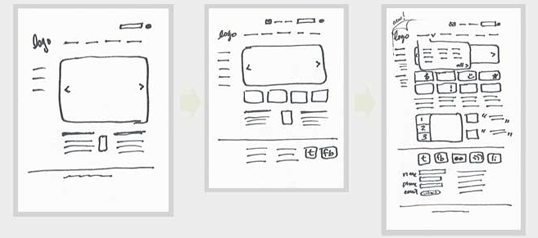The homepage is the target of many an internal tug-of-war. In institutions or corporations, separate departments all want a piece of the home page pie. In smaller companies, product or service advocates lobby for their pet project to get room in the “spotlight”. Even in your own personal web site, it can be tempting to give everything at least a little attention on the home page because you don’t want anything left out.
Whether you’re working on updating an existing site or starting from scratch, the inevitable pressure to max out the home page will come at some point.
How important is the home page, anyway?
Every conversation about a home page should be framed in the context of its purpose. Your analytics data can help you sort through this:
- At what points are people coming into your site?
- Are most visitors searching for certain terms and coming in through an internal page?
- For the people that come in through your home page, are they coming in through email campaigns, directly by typing the URL, or through referrer sites?
- At what point in their visit are people coming to the home page? How long do they stay there? Where do they go next?
You and your stakeholders might be surprised, for example, to find that most of your homepage traffic comes from a certain type of referrer. Or, that most of the visitors who complete a vital conversion (like signing up for a service) never even see the home page. If you can track down this type of information, it will help take the emotion out of the home page battle. It will also help you narrow in on what content actually needs to be on the home page.
Who’s in charge around here?
Decision makers are, not surprisingly, skilled at making decisions. They also tend to be good at respecting authority where it’s due. This is why it’s important to establish your authority by earning their respect from Day 1. If you do, they will value and seek out your guidance (note: this is different from always agreeing with you). If you don’t, they will make your decisions for you and you will lose control of the project. When your opinion is respected, you can safely enter into dialogue and challenge assumptions without defensiveness coming into the equation.
Even if you have authority, you can’t keep the home page healthfully trim if you don’t know the purpose and hierarchy of content. It’s really tempting to just ask the stakeholders, managers, or owners what content is most important because it seems so efficient. Unfortunately, this can easily lead to a home page that is made for CEOs and managers but is nearly unintelligible to your target audience. Let your conversations with them be a part of a research and planning process that is centered around your core audience.
Have a plan for the squeaky wheel.
It seems to be a rule that as soon as you’ve put the last touches on your site, someone gets bent out of shape: “What about project XYZ?! It launches in two weeks and it needs to be on the home page. And we need more social media links, anybody could tell you that. That is more important than A, B, and C things you featured.” This leads to shoe-horning content into a completed design that has no room for it.
Often, the individuals who come in with last minute critiques or crises were not involved in the planning process. This can be a tricky situation, but there a few things that can help you:
- Frequently, this is an external symptom of an internal problem. If this is an issue that needs to be worked out within the organization, then don’t try to solve it yourself.
- Take the content of what they’re saying out of the context of their emotion and evaluate it. They might have a valid concern that just got overlooked.
- Help educate them with homepage usability guidelines.
- Your documentation, signed agreements, and change orders are your friends. Ideally, you can reference a previous document where the team approved your plan for the home page. If you are contracting to a company, the issue can suddenly becomes less urgent if the current web site is signed off on and these edits require a change order.
Don’t let the squeaky wheel get the grease if it’s not in the best interest of the project! This sends a defeating message to everyone else and it doesn’t help your site visitors.
Emily Smith is an information architect and usability consultant for the web and Apple devices. She co-works with other web professionals in Greenville, SC and can be found online at emilysmith.cc.

